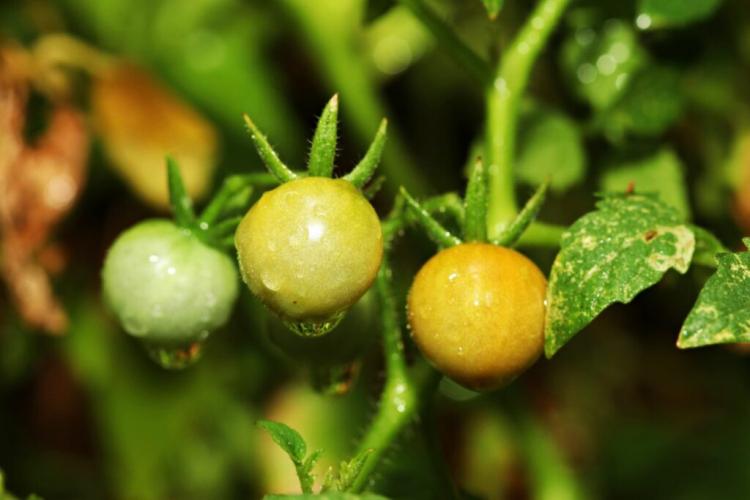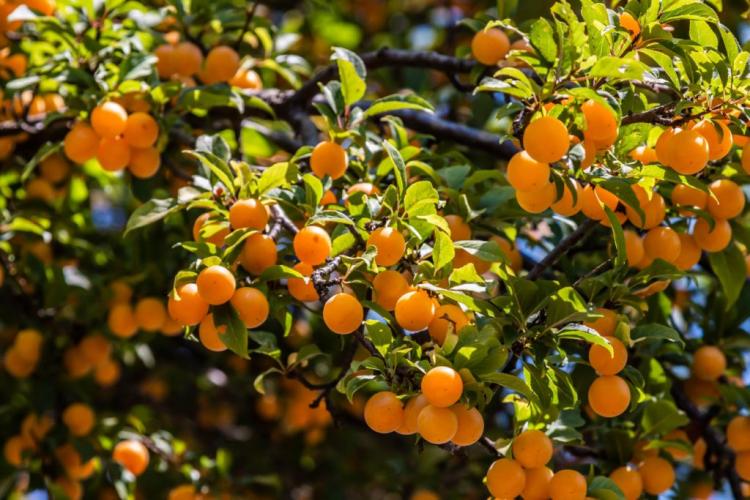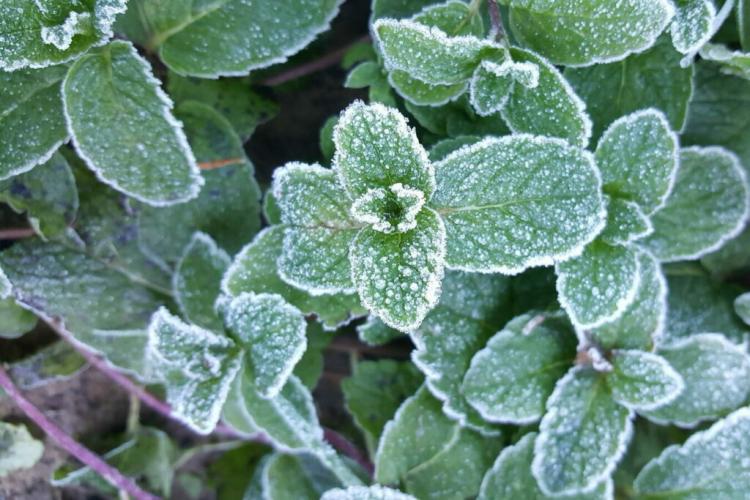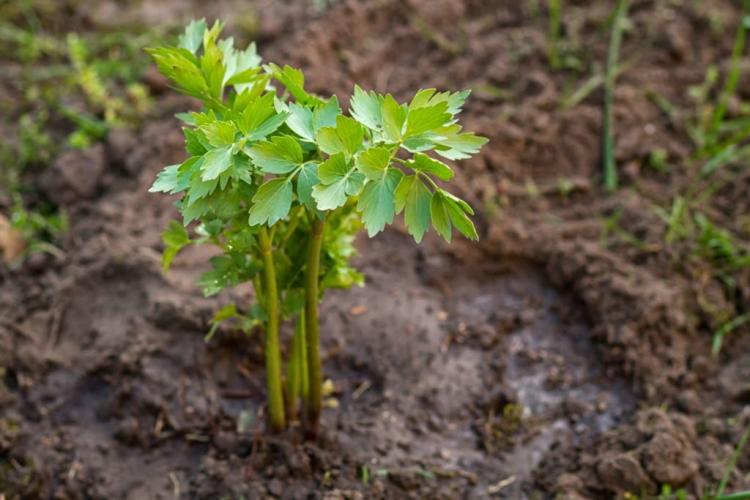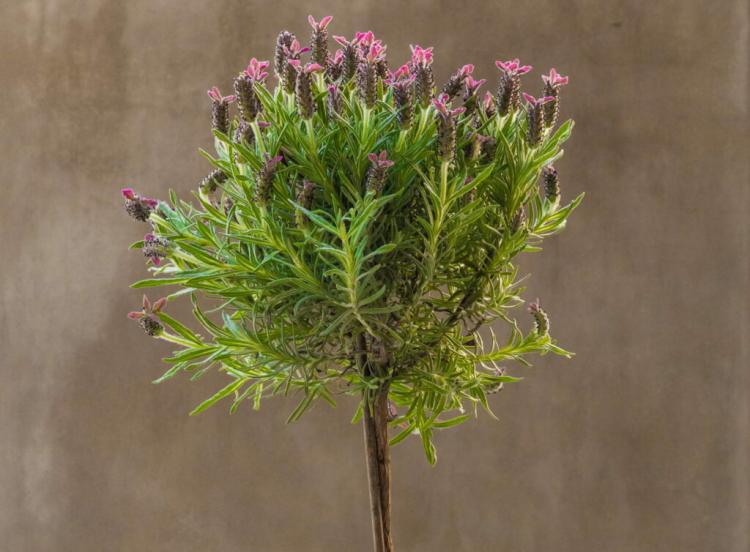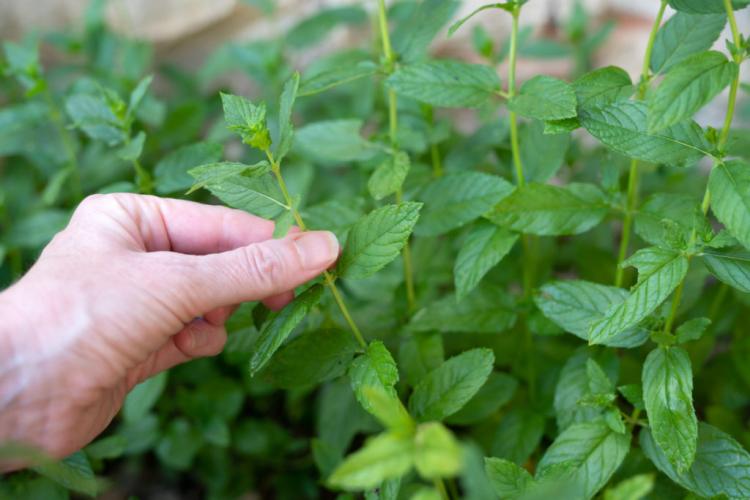Galapagos Tomato: Caring For The Wild Yellow Tomato
The wild tomato Solanum cheesmanii is known in this country as the Galapagos tomato. With us, you can find out more about this unusual type of tomato and how it is grown. The tomato species Solanum cheesmanii, which comes from the Galapagos Islands, is closely related to our cultivated tomato (Solanum Lycopersicum ). We will introduce you to the Galapagos tomato and give you tips on how to grow the well-traveled species in your own garden.
Galapagos tomato: fact sheet
Table of Contents
| fruit | Cocktail tomato; yellow to orange |
| taste | sweet and sour |
| Ripening time | early from July |
| growth | Wild tomato, up to 2 m |
| Location | Outdoors, pot |
Origin and history of the tomato variety
As the name suggests, the Galapagos tomato comes from the islands of the same name off the coast of Ecuador. It occurs there wild as one of two endemic tomato species. This means that they – like the very hairy Solanum Galapagos – only exist on the Galapagos Islands. The wild tomato came to the mainland in the form of fruits and seeds, where it was planted as an exotic species in the garden. In the meantime, however, hobby gardeners in this country are also enjoying the robust type of tomato and are growing them regularly.
Charles Darwin discovered this species and made an entry for it in his herbarium. It probably descends from its close relatives, the cultivated tomato and the wild tomato Solanum pimpinellifolium. It can also be crossed with the two tomatoes and thus produces hybrid offspring. The robust wild tomato has already been successfully crossed inbreeding and has introduced resistance and tolerance to some important diseases in modern tomato varieties.
Properties and taste of the Galapagos tomato
The Galapagos tomato grows perennial and shrub-like in its warm home. In our annual cultivation, it is about one to two meters high and usually just as wide. It quickly takes up the same space as a zucchini plant ( Cucurbita pepo ssp. Pepo convar. Giromontiina ). The foliage is light green and rather delicate and lobed in small pieces. The whole plant is finely hairy and bears many small, round, oval to slightly pear-shaped fruits.
These reach a weight of 5 to 8 grams and are therefore significantly larger than the fruits of the related wild tomato Solanum pimpinellifolium, which we also know as the current tomato. The fruits of the Galapagos tomatoes are yellow to orange in color and have a sweet and sour taste. The sweetness develops even more in a sunny location. The Galapagos tomato is seed-proof and can be reproduced from its own seeds and sown the next year. You can find tips and instructions for extracting tomato seeds in our special article.
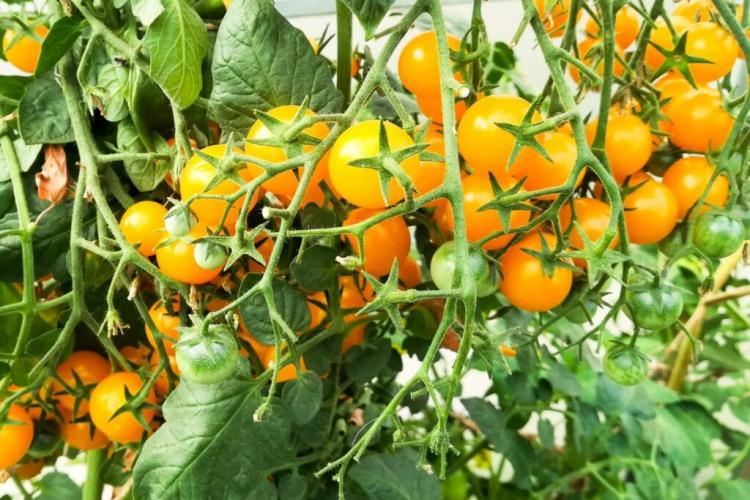
Planting and caring for Galapagos tomatoes
The wild Galapagos tomato is ideal for planting outdoors without rain protection. It makes no special demands on the soil, it can even tolerate salty and more humid soils, such as those found on the Galapagos Islands near the coast. Since it sprawls heavily and also grows in width, it should be allocated a generous space. The culture in the pot is also possible, a warm location promotes the sweetness of the fruit. From February to March, the young plants of this wild tomato, just like their relatives, the cultivated tomato, are grown on a warm, light window sill. After the ice saints in mid-May, they are planted in the bed or the pot. The tomato can also be grown in a raised bed.
You might so like: Oxheart Tomato: Tips For Planting And Caring For The Beefsteak Tomato
Nutrient-rich potting soil is ideal as a substrate for wild tomatoes in pots. In contrast to many other soils, it works completely without peat and stores plant-available water through a high content of compost. The pre-fertilized soil provides young tomato plants with the necessary nutrients such as nitrogen, phosphorus, etc. after planting until they have rooted and the first flowers are formed. The young plants of the Galapagos tomato are placed deep in the planting hole or in the pot, the lowest leaves are removed and the pot with it Earth replenished. After planting, water generously and water regularly for the following weeks as well.
There are a few points to consider when caring for the Galapagos tomato – but the wild tomato is much more undemanding than commonly cultivated tomatoes. Pests and diseases rarely occur in this species.
The precocious wild tomato blooms partly as soon as it is planted out, partly not until June. The first small fruits will soon appear on the large, sun-yellow flowers. In this phase, the nutritional requirements of the tomato plant increase sharply and the first fertilization should take place in June. In the case of tomatoes in pots or wild tomatoes that are overgrown, the application and incorporation of a granular fertilizer can be difficult.
With the help of organic liquid fertilizer, you can flush the required nutrients directly to the roots of the plant with irrigation water. To do this, add 15 to 25 ml of the organic tomato & vegetable fertilizer to 5 liters of water about once a week and water your Galapagos tomatoes with it.
By the way, you don’t have to skim the Galapagos tomato at all. It forms countless flowers and therefore fruits on its many side shoots. Therefore, the numerous shoots are not removed. So that the vigorous shoots of the wild tomato do not soon lie on the ground, it is advisable to untie the tomato. A metal frame or several wooden stakes around the plant, around which a cord is wrapped, are suitable. The plant leans against the scaffolding, the fruits stay clean and the harvest is also much easier this way.
Harvesting and using the wild tomato
The wild tomato from the Galapagos Islands is particularly popular with children and prefers to be nibbled directly from the plant. The small tomato fruits can also be easily dried and thus made durable for the cold season. A tomato variety that not only bears small fruits but also has tiny growth is the Tiny Tim tomato. We present this dwarf variety to you in a profile.
